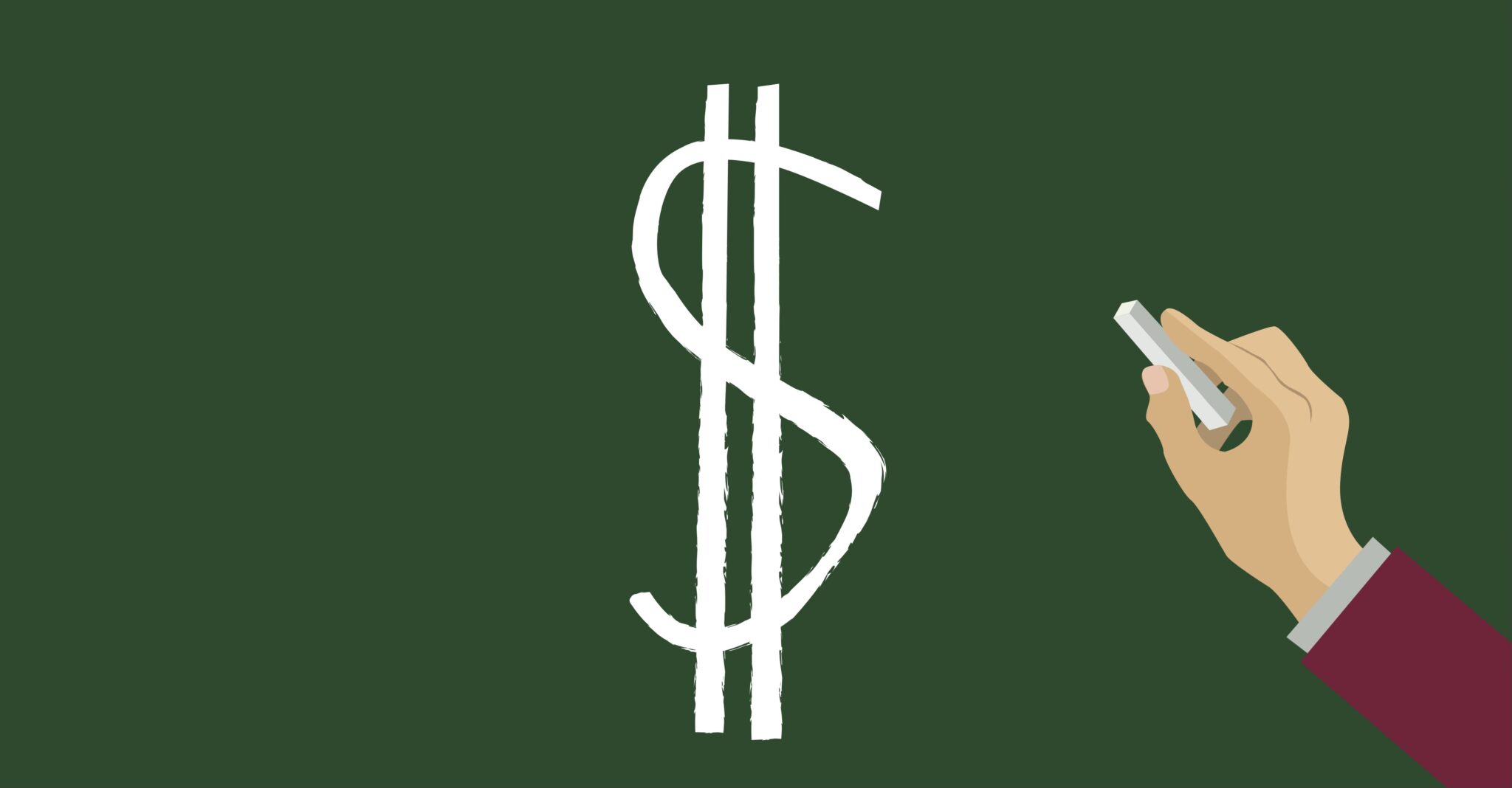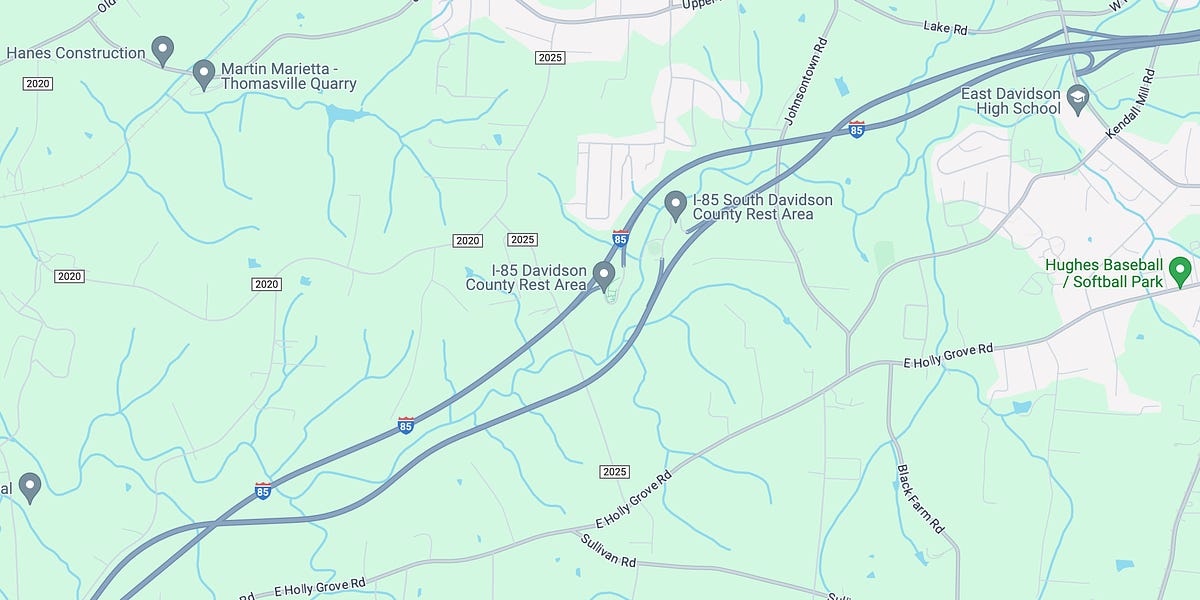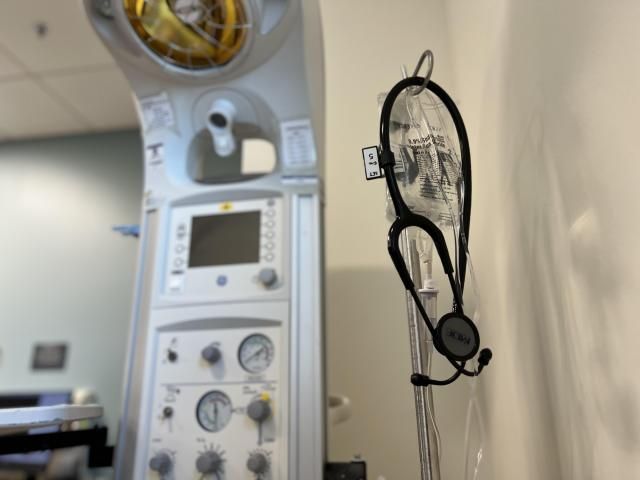North Carolina
The question of master’s pay for North Carolina teachers

 |
When Diana Chapman was applying to UNC-Chapel Hill’s Master of Arts in Teaching (MAT) program earlier this year, she knew she eventually wanted to teach in the Wake County Public School System — or leave North Carolina entirely.
The convenience of being close to her family in Raleigh was one factor, but a more important one was pay. Last year, Wake County Schools re-implemented a master’s pay program for teachers in the district: a 10% pay bump for teachers with a master’s degree.
This pay raise was an initiative funded statewide in North Carolina until 2013. Teachers who already had a master’s degree retained their raises, as did any teachers who had already started a master’s program in education or a related field before August 1, 2013 — but anyone who began their program after that date did not receive the higher pay.
The program was discontinued at the state level that year because of studies demonstrating that teachers with master’s degrees aren’t more effective at raising student test scores than teachers without them.
But to future teachers like Chapman, test scores aren’t the only way she sees herself measuring student success — and her own skills in the classroom — after she graduates with her MAT.
“I think there’s a lot more merit to be said about getting a master’s degree than teacher effectiveness via student test scores in the classroom,” Chapman said.
Education funding in North Carolina
Last March, Wake County’s school board voted to reinstate the 10% pay bump for teachers with master’s degrees using local recurring funds.
Elena Ashburn, the central area superintendent at Wake County Schools, didn’t work directly on the proposal, but fully supports it. She said master’s pay compensates qualified teachers for an increased level of professionalism they bring to the classroom.
“We have a lot of staff who have committed to this work that have their master’s degree — that are, quite frankly, going to do this work, even if they didn’t get this 10% raise,” Ashburn said. “So on the one hand, it rewards, it helps retain, it helps professionalize the people that we already have that are doing such incredible work in our schools.”
The other reason for the salary bump was to help recruit new teachers, Ashburn said.
For teachers in Wake County already grandfathered into the program, there weren’t any salary changes. But with the pay bump, a new teacher with a master’s degree would be making almost $400 a month more, according to North Carolina’s 2023-2024 State Salary Schedules.
In North Carolina, public school teachers are paid a base salary from the state dependent on years of experience. In the 2023-2024 school year, a first-year teacher earned $39,000 annually, while a teacher with 15 years of classroom experience earned $52,060 as their base pay.
That number can increase based on bonuses for classroom achievement and local supplements that range widely between districts. The average supplement is just over $5,000, but some counties don’t have a local supplement at all.
Before reintroducing the master’s pay program, Wake County’s average teacher supplement was $8,670 — the second-highest in the state in 2021-22, according to a BEST NC report on teacher pay.
Because these extra funds come from local dollars, lower-wealth counties typically aren’t able to offer as high of a supplement. The state legislature created the Teacher Supplement Assistance allotment in 2021 to try to address this problem.
If other districts wanted to re-implement a master’s pay program, they wouldn’t necessarily have the money to, unless the funds came from the state.
“Our rural counties can’t do that kind of supplemental pay program that our urban counties are doing,” said Susan Book, one of the co-founders of Save Our Schools NC. “And so we see great inequities in teacher pay across the state, which I find concerning.”
Paths to teaching with a master’s
The master’s degree in history Katie Bollinger received from American Military University in 2010 meant she was eligible for North Carolina’s master’s pay program when she started teaching middle school in Wake County in 2011.
She taught primarily social studies and science classes, and also a few in language arts, during her 12 years in Wake County. But because her degree was in history — and not a master’s in education or a master’s in teaching — she was more constrained in how that pay was applied.
“I actually had to teach my subject matter to get that pay,” Bollinger, who now teaches in Onslow County Schools, said. “Because if I were to teach anything less than 50% social studies, I would not get that master’s pay.”
Master’s pay programs offering raises to teachers with advanced degrees are popular throughout the rest of the country — North Carolina was the first state to eliminate the program in 2013. About 90% of the largest districts in the country have some kind of incentive for teachers with master’s degrees, according to the National Council on Teacher Quality’s Teacher Contract Database.
Critics of master’s pay programs claim that master’s pay only incentivizes getting a degree, not being a better teacher.
When the statewide program was in place, the master’s degree received had to be content-specific to a teacher’s subject area — like Bollinger’s — or in education.
That meant a teacher could get an advanced degree in School Administration, for example, for the sake of the master’s pay bump, but then go straight back to the classroom — where the skills they built during the graduate degree weren’t necessarily being applied to make them more effective educators.
In other cases, a master’s degree is how a future teacher gets their teaching license after an undergraduate degree in another subject — like Chapman, the future MAT student, who will graduate from UNC-CH in May with a degree in English and a minor in education.
UNC-CH does not have an undergraduate education major where students graduate with a teaching license. For UNC-CH students, a master’s degree — or an external program like Teach for America — is a natural next step toward a career in teaching.
While Chapman has both content-specific and teaching knowledge from her minor going into the MAT, Frank Forcino — the director of the science education program at Western Carolina University — said that’s not always the case.
“Folks that are trying to get in [Western’s] MAT program don’t have that content knowledge as often as they used to,” Forcino said. “And that is typically not as good for the students because in order to, you know, explain content, teach content, you really do need to have a deep understanding of it.”
Students who come into the MAT from other disciplines or careers don’t always have the opportunity to develop a pedagogical background — and because so much of the MAT structure is in the classroom, it can feel like they’re just being thrown in the deep end, Forcino said.
“They are learning how to be a teacher by being a teacher,” Forcino said. “They don’t have any training when they start and they’re getting this training as they go, while they’re being overwhelmed with being a first-time teacher.”
He said it’s hard to generalize which route leads to “better” teachers because there are so many factors affecting teacher effectiveness and student success in the classroom.
Forcino, though, almost always recommends a four-year education degree over just a MAT to the students he advises at Western. Even if it takes an extra semester of a student’s undergraduate career, there is much more time for a future teacher to develop both content-specific knowledge and learn teaching methods, he said.
But that’s the route that wouldn’t get a teacher a pay bump with a master’s pay system in place.
Read more about teacher pay
Beyond master’s pay
Since accepting admission to UNC-CH’s MAT program, Chapman has changed her mind about Wake County Schools. As someone who eventually wants to teach future teachers in a higher education setting, she thinks the experience of teaching in different districts in North Carolina will be valuable for her future career.
And the scholarships she’s gotten from UNC-CH mean she now knows she won’t have to worry about student loans going into her teaching career.
“But I think that for a while, I was definitely looking around, like, ‘Where can I live comfortably, and not have to eat ramen every day?’” Chapman said.
Bollinger now teaches at a middle school in Onslow County. She makes less there than she did during her years in the Wake County Public School System, but the rapidly rising cost of living in the Triangle area was too much for her to sustain on a teacher’s salary, she said.
The base pay for a new teacher will increase to $41,000 for 2024-2025 school year, due to raises approved in the North Carolina General Assembly’s most recent budget.
But, according to Forbes, the average two-year master’s program in the United States costs almost $40,000. UNC-CH’s MAT costs roughly $13,000 in tuition for the yearlong program, with Duke University’s MAT running closer to $50,000 — more than the starting teacher base salary.
Tara Wojciechowski, a chemistry teacher at Wake County High School, has reached the top of the North Carolina teacher pay scale — which caps at 25 years — with her 27 years in Wake County classrooms. Even so, for her, it’s never been about the dollar figure she brings home.
“It’s not about the pay, necessarily — I mean, if you have a partner that makes a decent amount of money, anyway,” Wojciechowski said. “I feel bad for all the single teachers out there.”
Wojciechowski said she has never felt the need to get her master’s degree — partially because of her financial situation, but also because she has her National Board Certification — which comes with a 12% pay bump paid out at the state level.
To be National Board-certified, teachers who have been in the classroom for at least three years to “demonstrate standards-based evidence of the positive effect they have on student learning,” according to the National Board website.
Research has demonstrated National Board certification is correlated with student achievement, but high-poverty districts have a much lower percentage of certified teachers.
According to a 2023 BEST NC report on teacher pay, just 5% of teachers at the highest-poverty schools are National Board-certified, compared with nearly triple that in the most well-off districts — presumably, at least in part, because of temptingly higher salaries in those districts.
Forcino said in his eight years teaching at Western, there have been only a few students who have stayed in the area to teach after graduating. Most of them, he said, have headed back to where they’re from, or to Raleigh and Charlotte for those more competitive salaries. Others have left to go to Georgia, South Carolina or even further away.
Keeping salaries competitive, by whatever means, is essential for ensuring there are qualified teachers in North Carolina classrooms, he said, but there’s more to it. Forcino said if parents and administrators are making teachers’ lives more difficult, that hardly incentivizes them to remain in a classroom, much less advance their professionalism with a degree.
“We need to pay teachers more — that’s the definitive fact. We need to pay them a competitive salary,” Forcino said. “But aside from that, the other key factor that goes into ensuring teachers stay in the field is giving them support, making them feel valued in their career.”

North Carolina
Why A Stretch of Interstate 85 is Backward in North Carolina

Some people say nothing good happens after midnight. Well, those people are wrong, because here is an interesting question from Fletch Brendan Good that came in at 4:41 a.m. Eastern time:
Several people have asked me about this! And yes, it’s true: Between Lexington and Thomasville, the lanes on Interstate 85 cross over each other. Which means, for three…
North Carolina
North Carolina Senate passes reactionary anti-masking bill
The passage of the North Carolina House Bill 237, also known as the “Unmasking Mobs and Criminals” Bill, in the state Senate on Wednesday brings the state one step closer to making it illegal to wear face masks in public, regardless of the threat posed by the COVID pandemic.
The legislation was voted on by a margin of 30 to 15 along party lines, with five abstentions. Revisions to the bill will mean the state House will vote on it again. But even if North Carolina Democratic Governor Roy Cooper vetoes the law, the Republican-majority state legislature will have sufficient votes to override him.
Although the bill leaves a number of exemptions in place, it specifically deleted the exemption, “Any person wearing a mask for the purpose of ensuring the physical health or safety of the wearer or others.” Meanwhile, masks can be worn as part of “traditional holiday costumes in season,” or if the person is “Engaged in trades and employment where a mask is worn for the purpose of ensuring the physical safety of the wearer, or because of the nature of the occupation, trade or profession.”
Public mask wearing has long been illegal in the state, but with many exemptions. The exemption for public health concerns was put into effect with the onset of the COVID pandemic. The measure to remove that exemption was introduced to the Senate Judiciary Committee by right-wing Republican Senator Buck Newton.
Newton told reporters that the action was being taken in part because of recent demonstrations by students on college campuses who were protesting the genocidal Israel onslaught against Palestinians, which has completely devastated the Gaza enclave and its more than 2 million inhabitants.
Newton’s claims that students are attempting to cover up their identities and that this represents some form of criminal enterprise are simply preposterous. “This isn’t just about protests,” Newton said. “I think it’s clear that people are seizing the opportunity to do things they’re not supposed to do, to break the law, or to intimidate people, and to keep their identities hidden, and it’s time for that to stop.”
Republican supporters of the legislation openly admit that the purpose of the measure is to help law enforcement crack down on protesters wearing masks, arguing that they were abusing pandemic practices to hide their identities.
In reality, students and protesters have, by all accounts, conducted themselves with considerable restraint. They have demonstrated exceptional courage in the face of attacks by the police and fascistic thugs. Police have carried out mass arrests of young people and faculty members who have come out in support. Many also take the ongoing pandemic as a serious reason to protect themselves and others from infection.
In that, they represent an important development of conscious social awakening in response to the actions of Biden and company in shutting down all public health measures in addition to the rampant US militarism. The students oppose the government’s and respective universities’ complicity and support for these war crimes, exercising their essential democratic rights laid down in the Constitution.
In fact, the assured passage of the law will only strengthen the hand of the state and will be seen as a landmark action that will be mirrored across the country. Challenges to the North Carolina bill will assuredly reach the Supreme Court and find legal expression for state repression while potentially placing the lives and well-being of people in danger. One can even assume that those wearing respirators or who cover their heads and faces for religious and cultural reasons will face hostility and repression from the local police and fascistic mobs.
Ohio’s Attorney General Dave Yost’s warnings made in a recent letter to the presidents of Ohio’s 14 universities underscores the gravity of these developments.
Mehring Books
COVID, Capitalism, and Class War: A Social and Political Chronology of the Pandemic
A compilation of the World Socialist Web Site‘s coverage of this global crisis, available in epub and print formats.
Yost wrote, “In our society, there are few more significant career-wreckers than a felony charge. I write to you today to inform your student bodies of an [1953] Ohio law that, in the context of some behavior during the recent pro-Palestinian protests, could have that effect.” That law states, “No person shall unite with two or more others to commit misdemeanor while wearing white caps, masks, or other disguise.” The breaking of the “anti-disguise” carries a fourth-degree felony charge and up to $5,000 fine and five years on community control, Yost reminded them. That the law has never been applied until now means it amounts to a state-sanctioned threat.
These anti-mask laws Yost references were enacted in the 1940s and 1950s by states in response to the activities of the Ku Klux Klan, whose members hid their identities to perpetrate violence and terror on their victims. However, as historians have noted, these laws weren’t intended to protect the victims, but were rather employed to curb the public displays of the Klan which were discrediting Democratic Party efforts to defend Jim Crow segregation. They remain in place in 18 states including North Carolina.
The COVID pandemic remains an ongoing public health concern. Despite the dismantling of all metrics that provide real-time information on the state of the pandemic, nearly 22,000 people died of COVID in the first four months of 2024. For the 2023/2024 influenza season, hospitalized COVID patients had a 35 percent higher rate of death than those admitted for the flu.

Loading Tweet …
Meanwhile, the Economist update on the impact of Long COVID estimates a prevalence of 2 to 7 percent or upwards of half a billion people worldwide with some level of ongoing impact from their infection.
For the US, the magazine estimates a loss of $152.6 billion in GDP in 2024 alone from COVID. For those who have left the workforce, 953.6 million hours of work were lost. Those with reduced hours account for another 366.3 million hours and those who continue to work with their condition cost more than 177 million hours. One needs only to extrapolate these figures to the rest of the globe to understand the magnitude of the COVID pandemic atop the nearly 30 million that needlessly died because of the greed of the ruling elites that have placed profits over life every step of the way.
The World Socialist Web Site is the voice of the working class and the leadership of the international socialist movement. We rely entirely on the support of our readers. Please donate today!
North Carolina
North Carolina grapples with growing nursing shortage

North Carolina faces an estimated nursing shortage of 12,500 workers by 2033.
One projection by the Cecil G. Sheps Center for Health Services Research at the University of North Carolina at Chapel Hill says long-term effects of the pandemic could cause that to jump to 18,600.
Braxton Nowell, UNC Health RN, has experienced the strain of a nursing shortage firsthand.
“One wonderful thing about medicine is people are living longer, healthier lives. However, we also have to have the nurses to take care of them,” he said.
The North Carolina native started working for UNC Health in January of 2020 as a nursing assistant.
“My grandmother is really my main reason for nursing,” Nowell explained. “I saw when she was in the hospital – she’s been hospitalized multiple times throughout my life – I saw the care she was given and how nurses advocated for her. I knew that’s what I wanted to do for people as well.”
He had only been on the job a mere three months before the healthcare system experienced an unprecedented shift in patient care due to a global pandemic.
“This unit was the COVID unit,” Nowell explained while showing WRAL News around the medicine progressive care unit at the Chapel Hill hospital.
Despite widespread burnout with healthcare as COVID cases climbed, Nowell continued his training. He graduated from UNC with a bachelor’s degree in nursing in 2022.
As UNC marks the recent graduation of 113 BSN students and another 70 graduate students from its school of nursing in Chapel Hill, Nowell hopes more students will follow suit to work in the Tar Heel State.
But, he says a lack of program space is a big issue.
“There’s not enough slots for people that want to be nurses. I think at UNC, they have 120 spots and I know they get more than 200 applications,” Nowell explained. “They always can’t give people who I know want to be nurses a slot.”
Kylie Goodman is in the midst of her first year in the accelerated bachelor of science nursing program through UNC.
“Originally I thought I wanted to be a dietitian but growing up I was always really passionate about healthcare,” said Goodman. “I’m very interested in the overall body as a whole and helping people who are sick more in that aspect.”
He and other nursing students take classes in Roper Hall with the School of Medicine while the university’s School of Nursing is demolished. A new building is expected to open in 2026. Officials say it will help the university reach its goal to increase nursing program capacity by 50%.
The UNC Health system currently has about 1,400 openings.
Goodman and dozens of others in the ABSN program are looking to one day fill some of those roles.
“I really do enjoy (pediatrics) but I also like adult,” Goodman shared. “I think trauma sounds interesting.”
When asked why she still wished to pursue a career in medicine in the wake of a global pandemic, Goodman said she just wanted to help people.
“Just to be able to come home from work today and say I know I made a difference in someone’s life,” she said. “Patients are in a stressful environment and they’re vulnerable. I want to be that person to help them in those situations.”
She added, being a student during such a difficult time makes her better equipped to handle a stressful career like nursing.
“I think the ability to adapt is really going to help me in this career and the ability to just take things as they come and adjust to them,” Goodman said.
US News and World Reports ranks Duke’s undergraduate nursing program the best in the country. UNC is ranked No. 4.
Terry McDonnell, senior vice president and chief nurse executive for Duke University Health System, said Duke’s current nurse vacancy rate “is less than 1%.” McDonnell said this is due to the use of “team-based models” used to provide care.
McDonnell added, “Duke nursing care benefits from partnership with the Watts School of Nursing and close collaboration with Duke University School of Nursing, Durham Tech and Wake Tech, as well as by undergoing efforts to reduce administrative burdens on nurses.”
-

 News1 week ago
News1 week agoSkeletal remains found almost 40 years ago identified as woman who disappeared in 1968
-

 World1 week ago
World1 week agoIndia Lok Sabha election 2024 Phase 4: Who votes and what’s at stake?
-

 World1 week ago
World1 week agoUkraine’s military chief admits ‘difficult situation’ in Kharkiv region
-

 Movie Reviews1 week ago
Movie Reviews1 week agoAavesham Movie Review
-

 World1 week ago
World1 week agoCatalans vote in crucial regional election for the separatist movement
-

 News1 week ago
News1 week agoTrump, Reciting Songs And Praising Cannibals, Draws Yawns And Raises Eyebrows
-

 Politics1 week ago
Politics1 week agoNorth Dakota gov, former presidential candidate Doug Burgum front and center at Trump New Jersey rally
-

 Movie Reviews1 week ago
Movie Reviews1 week agoUnfrosted Movie Review: A sweet origins film which borders on the saccharine















